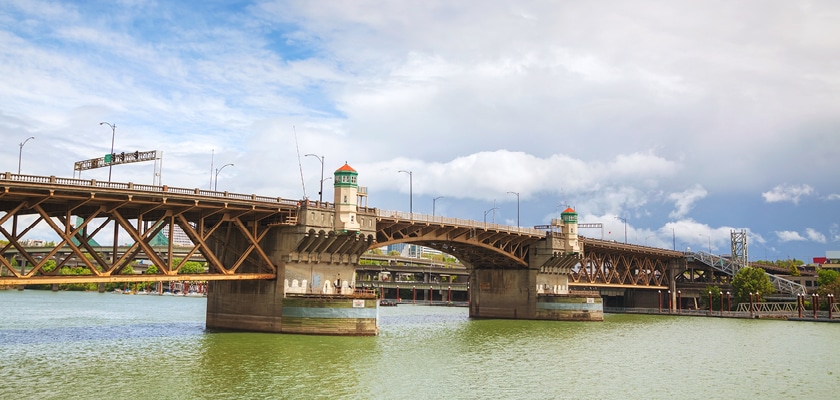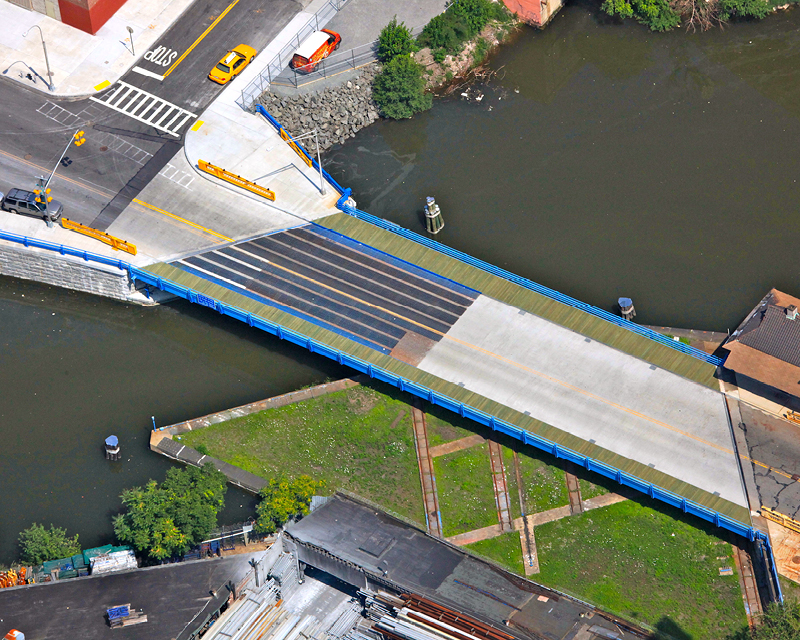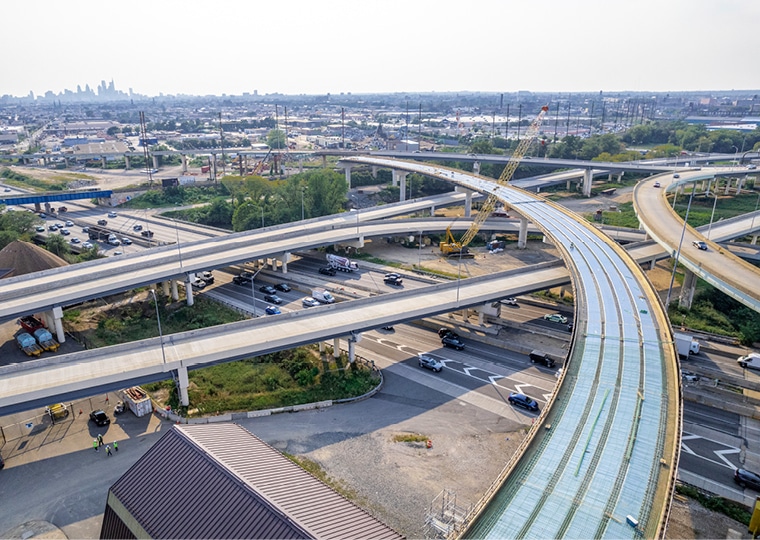
STV’s movable bridge experts have been selected to provide owner’s representative services for the design and reconstruction of a historic and vital thoroughfare in Portland, OR.
The Earthquake Ready Burnside Bridge project is part of a larger Multnomah County initiative to fortify its aging bridge system. The project will reconstruct the historic bascule movable span to be seismically resilient as well as add a signature long span to this historic crossing.
The Burnside Bridge is a crucial link into downtown Portland, carrying 44,000 vehicles, three bus lines, and more than 2,000 pedestrians and cyclists who commute daily across the Willamette River. It is also a lifeline route for emergency services to respond after a major disaster, including an earthquake, and one of the few county bridges without the risk of an Interstate overpass collapse. Built in 1926, the historic double-leaf structure boasts Art Deco features, Italian Renaissance towers, and a bascule lift mechanism, the bridge design was revolutionized by structural engineer, Joseph Strauss.
“Oregon is home to some of the oldest, most historic bridges in the country. At the same time, the Pacific Northwest has a unique seismic zone,” said Nick Altebrando, vice president and engineering chief in STV’s National Bridge Practice and the firm’s leading movable bridge expert. “Many residents live on the east side of Willamette River, and Burnside Bridge connects them to downtown’s most dense urban business area. A large earthquake could threaten this major connection, which prompted Multnomah County to select Burnside to be seismically hardened.”
As the state’s most populous county, Multnomah County manages six bridges that cross the Willamette River and 22 smaller bridges throughout the region. The country recently announced that $20 million in state funding will be directed to the Earthquake Ready Burnside Bridge Project.
STV is part of the owner’s representative team led by David Evans and Associates, Inc. (DEA), providing the county with program management services, technical and engineering support, and development of the request for proposal (RFP) for the architectural and CM/GC contracts.
STV provided crucial National Environmental Policy Act (NEPA) Phase engineering review services. The team studied multiple approaches and movable spans and supported the production of a detailed cost estimate and risk analysis. Alongside the county, the owner’s representative team reviewed public input on the design alternatives. The selected design alternative will retain the historic bascule movable span with a similar double- or four-leaf trunnion bascule span and a new long-span structure on the bridge’s east side with a conventional short-span girder west approach.
The firm’s national bridge practice brings a wealth of constructability expertise to the local project. Multnomah County sought Altebrando for his nearly 40 years in complex long span and movable bridge projects and STV, with its in-house staff of movable bridge, structural, mechanical, and architecture teams.
“This project features an expansive team with multiple partners, who are all committed to the purpose and need of this project,” said Altebrando, who has lent his movable and complex bridge expertise to Multnomah County for the past 30 years. “The local community has also been flexible as our team manages the balance between historic preservation, cost savings, and a seismically sound design.”






